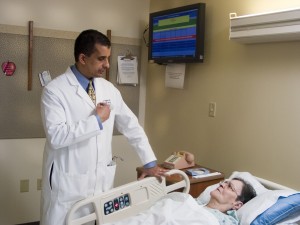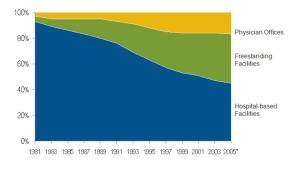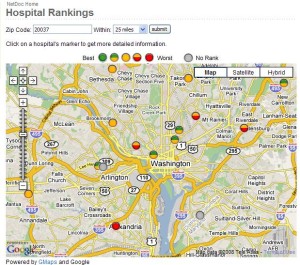
Increasingly, healthcare organizations are investing in clinical information systems. According Kalorama Information – the publishing division of MarketResearch.com, hospitals in the United States would be spending close to $4.8 billion on Electronic health record(EHR) or Electronic medical record systems(EMR). Despite the brouhaha, there is a lack of understanding of what an EHR can do and can not do.In this post, we will attempt to peal the layers.
What is an EHR/EMR? Simply put, the EHR is an electronic record of a patient’s medical history. This electronic record includes important information like test and imaging results, medication history, Emergency department visit summaries, doctors’ notes and general health history – from childhood allergies to surgeries.
All of this exisits currently, (in most hospitals).But, in paper charts and in some cases in databases behind applications that do not talk to each other . For Instance, the Emergency department diagnosis, might reside in EMSTAT(a popular ED application) , while the same patient’s Inpatient treatment notes resides in another application such as Affinity.
An EHR ultimately replaces the paper chart currently used to store the same information. The electronic version of the record can be made available to the patient’s caregivers in different locations, more quickly and efficiently. And when done well, it minimizes data redundancy (the need to enter the same information over and over) . So for instance, information captured during an emergency visit can be retrieved by an inpatient care giver, if the patient goes on to recieve care as an inpatient.
How does EHR help hospitals ?
The EHR can help hospitals and health systems make improvements in three major areas.
1. Improved quality of medical decision making
It provides doctors with immediate access to a patient’s health information.Whether it is an Emergency Physicain, or a nurse that needs to phone an on-call physician in the middle of the night, the patient’s chart can be accessed to support important treatment decisions. In addition, in most cases the EHR is connected to a robust library of medical information that can help physicians in making diagnoses and treatment plans based on the latest research.In some cases, it can generate automatic reminders by mail or e-mail to notify test result availbility, critical values and other useful medical information.
2. Improved Patient Safety
Because doctors’ orders and prescriptions are entered into a computer rather than in handwritten orders, pharmacists and other caregivers have no trouble interpreting the information. This greatly reduces the possibility of transcription errors and other medical mistakes. Thereby reducing adverse drug events and increasing patient safety.
3. Improved efficiency
Caregivers will no longer need to search or wait for your patient chart. In addition, lab results and X-rays can be sent electronically to your doctors as soon as they are completed, for immediate analysis, diagnosis and treatment.
In addition to the major areas listed above, there are other advantages including cost savings from an EHR implementation. In a recent article that Houston Neal, (Director, Business Development, SoftwareAdvice.com) shared with us, they talk about how EMR can help reduce medical malpractice insurance premiums, reduced downcoding and even revenue gains by participating in pay for performance time programs (Medicare Care Management Performance (MCMP) ).




